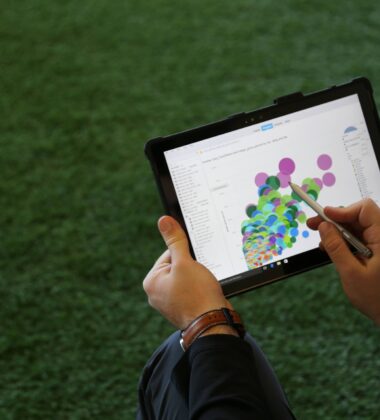"I wanted to learn how digital advertisers and marketers have been adapting to all the recent changes over the years, including digital privacy laws and platform changes from companies like Meta, Apple, etc." -Jonathan Vanian from CNBC.
This was a question asked to me in a recent interview discussing the evolution of digital marketing technology and privacy regulation over the last decade. It had me thinking, should I write a blog post on this for our clients? Not to mention, those curious enough about privacy impacts to search about the topic online.
In the post below, I'm going to write about digital privacy laws over the last decade and major privacy changes by private organizations. Once I wrap that topic up, I'll discuss the ways that advertisers and marketers are changing their tactics and strategies due to such changes.
This will include what we're seeing in digital marketing as "winning" and "losing" scenarios.
Digital Privacy Laws - A Quick History

In my professional experience, General Data Protection Regulation (GDPR) and the California Consumer Privacy Act (CCPA) most significant pieces of legislation for digital privacy laws in the last decade.
Digital Privacy Changes - A Quick History
Moving on to what is arguably the single most impactful privacy change to date worldwide, let's review the iOS 14 app tracking transparency feature. In short, this feature, released by Apple, provides end users the ability to block apps from accessing their device identifier which makes it harder to track users across devices. It also makes it much harder for apps that harvest data to create personally identifiable data sets which they can sell to other organizations for profit.
The biggest challenge these laws present is cookie consent management.
The most discussed topics tend to be:
- What cookies or trackers are considered “essential” vs. “non-essential”.
- Where and how is this tracked information being used?
Depending on the industry and company size, legal teams have different, subjective preferences for this. If enterprises are strict on the preferences, a lot of traditional tracking via front end cookies and device identifiers are lost. If they are less strict, traditional tracking is less negatively impacted.
The biggest challenges are managing personal records and data on demand.
The technical ability to produce personal records, and to delete either all or some segments of said records upon request, is a daunting challenge for many, if not most, organizations. No matter the intentions, most organizations fall within two cases:
- It's extremely difficult to request to view or delete your personal data (within the guidelines of the law) as an end user.
- The organization is so unorganized that they can’t efficiently process personal data requests and guarantee compliance. You request to have personal data deleted; the organization says it is deleted, but it remains in their system in some form due to technical debt not allowing them to actually delete the date
So why is the app tracking transparency feature such a big deal in digital marketing?
To answer that, we have to go back to the late 2000's. With the rise of mobile and the iPhone, the biggest challenge quickly became identity. The main questions being "How can a business identify a user across their increasing numbers of devices?" Solutions to this problem led to the ad tech boom of the last decade. Such ad tech gave marketers a neat interface to access user data and targets for ongoing revenue generation.
One of the companies who solved and dominated this challenge was Meta. Users were so keen to login into their social profiles through apps and browsers across all of their devices that it gave Meta the missing pieces no-one else had – the breadcrumb of device identifiers associated with a single Facebook/Instagram account. Meta quickly capitalized and built its identity model into the heart of its psychographic data modeling. Most people know of such modeling now by the name of “Facebook Ads” or “Instagram
Such modeling was so powerful, it heavily influenced the 2016 election with Cambridge Analytica.
With the app tracking transparency feature, Apple single handedly removed identification on what we believe is approximately 60 to 70 percent of the iOS market from Meta. This has greatly reduced Facebook's advertising effectiveness ranging in reductions from 20 to 40 percent, depending on industry, conversion goals and mobile usage. It's such a sizable impact that Facebook says it will take a $10,000,000,000 revenue hit next year (Yes, 10 BILLION).
A great debate topic in the future will be "What did more for digital privacy, GDPR/CCPA or the iOS14 update?".
How Advertisers Are Changing With The Privacy Landscape.

We are currently seeing two scenarios in advertising. Such scenarios are relative to the roles social media advertising plays in an organization’s sales processes. Trade desks and mobile advertising are important, but seem to play significantly less important roles in optimal media mixes than social media. Of course, search has largely been unimpacted.
The evolution of social media as a direct response channel.
Advertisers have to consider what roles social media channels play in their marketing funnels. If an organization has developed these channel functions as bottom of the funnel performance (meaning direct response), then they’ll struggle to keep it that way.
The response to this scenario has been a reduced marketing spend for these channels (ie: cut the fat), and more spend in paid search, email, direct response mail pieces and other channel partners (digital and physical).
The evolution of social media as a market research and iteration tool.
Organizations selling any new product or service largely unknown by brand, generalized products or service names, or those offering a paradigm shift in an industry, are going to be heavily impacted by privacy changes. Facebook was a great way to test across myriad audience types to see if there was a fit or favorable market perception. With less hyper-targeted ad efforts, the ability to evolve and learn quickly through Facebook ads has greatly diminished.
The solutions here aren't easy. We are seeing, and expect more of, a greater reliance on influencer marketing as it’s a good way to build social clout on top of the brand equity of established influencers. Also, it’s pretty easy to build audience and affinity groups from an influencer's focus subject or following. In short, using a platform such as Grin Apps for managing influencer marketing is a reasonable alternative for brand audience development.
How Marketers Are Changing With The Privacy Landscape.

The role of the marketer is increasingly more holistic and less specific to just media buying or paid advertising acquisition. The marketer’s focus will be more on marketing strategy and strategic execution, where the advertiser is focused more specifically on advertisement placement. From our experience, we're (again) seeing two scenarios play out here. They are defined below:
Avoidance: the Losing Scenario (Most Common)
No matter how much marketers try, the updates to their processes and approach will remain severely limited by the platforms they work with. With limited technical capabilities, and no solution for changes to data collection and privacy, the common recommendation is to “shift budgets or activities” to other platforms with better results. Such a shift is usually paired with changing the perception of what role social and mobile have in the sales funnel. The reality with this scenario is that it avoids the problem at hand – a loss of user data readily available in a platform for marketers to use.
Unfortunately the school of thought in marketing is to use a well-devised marketing plan, test multiple channels identified as historically suitable for the goals or objectives, test again, refine and repeat. This process works if the fundamentals of digital marketing weren't shifting with all the privacy changes. The logic bomb in this solution is that it’s not a solution at all, as it never addresses the problem of data access, of reliance on and loss of the ability to target audiences with another companies data (Facebook, TikTok, Instagram, etc.).
The Winning Scenario (Not Very Common)
The winning scenario is when marketers incorporate technical teams to solve the user data loss problems. The common theme here is each organization has to own its user data. With the ownership of such data it will need management and integration with and across advertising platforms to get the most juice for the squeeze. Organizations are beginning to own their data with three solutions:
- Implementing a customer data platform (CDP)
- Implementing a customer experience platform (CXP)
- Leveraging server side tracking instead of cookies in web browsers
The CDP enables you to organize and structure your customer data for purposes of collection and use within platforms or applications. The CXP allows you to integrate that data with platforms (like Facebook Ads, Google Ads, etc.) to deliver personalized experiences across ads, emails, website, and app experiences.
Server side tracking minimizes the impact of privacy regulation tools in apps and in web browsers. This includes ad blockers and some of Apple’s app tracking transparency features. While it doesn’t replace the data loss, it’s a notable substitute for it. This will help platforms you integrate with (like Facebook) better identify users on your sites or apps with their known data. It combines first party data (your data) with third party data (like Facebook) to increase effectiveness.
A reason why this might be less common is that marketing teams have become spoiled from the abundance of data from the ad tech boom of the 2010's. Everyone grew accustomed to neatly packaged targeting data readily available in a nice interface. And, while GDPR and CCPA policy intentions were good, the impact to smaller businesses is that they now have to rely on cultivating their own data to find success and quick growth. With this, we’ll see increased capital expenses and shifts in operational budgets, not to mention the increased need for the technical skill sets to understand and structure business data in ways that answers reporting questions and easily integrates with the ad platforms used.
In Conclusion - Adapting To Privacy Laws
It appears that the best way to adapt to privacy laws is to own your customer data. Regulations and major changes from mobile device makers will likely continue to impact the largest aggregators of data. These are the companies that have the easy-to-use advertising platforms that other companies have relied upon as growth steroids for the last decade. The winners of the next ten years will be those who embrace customer data ownership and integrate it with the core platforms that they use to grow and market their business.
Without investment in collecting, owning and managing your customer data, marketing teams will fall woefully behind and ultimately cause the organizations they work for to contract or fail.
Ready to take control of your customer data? Contact Three Ventures for strategic guidance and execution.





















